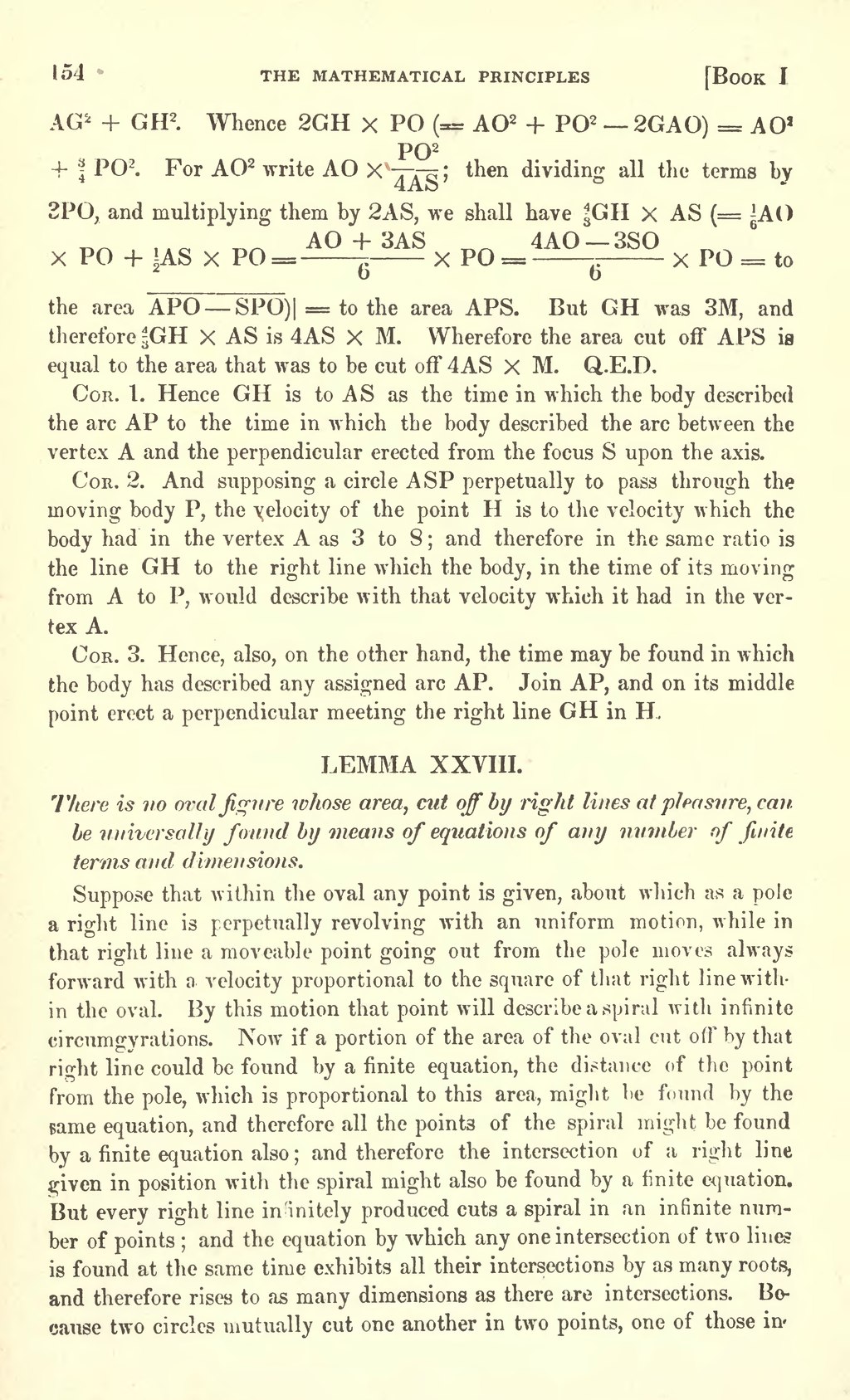AG² + GH². Whence 2GH PO (=AO² + PO² - 2GAO) = AO² + ¾PO². For AO² write ; then dividing all the terms by 3PO, and multiplying them by 2AS, we shall have 4/3GH AS (= 1/6AO PO + ½AS PO = PO = PO = to the area ) = to the area APS. But GH was 3M, and therefore 4/3GH AS is 4AS M. Wherefore the area cut off APS is equal to the area that was to be cut off 4AS M. Q.E.D.
Cor. 1. Hence GH is to AS as the time in which the body described the arc AP to the time in which the body described the arc between the vertex A and the perpendicular erected from the focus S upon the axis.
Cor. 2. And supposing a circle ASP perpetually to pass through the moving body P, the velocity of the point H is to the velocity which the body had in the vertex A as 3 to 8; and therefore in the same ratio is the line GH to the right line which the body, in the time of its moving from A to P, would describe with that velocity which it had in the vertex A.
Cor. 3. Hence, also, on the other hand, the time may be found in which the body has described any assigned arc AP. Join AP, and on its middle point erect a perpendicular meeting the right line GH in H.
LEMMA XXVIII.
- There is no oval figure whose area, cut off by right lines at pleasure, can be universally found by means of equations of any number of finite terms and dimensions.
Suppose that within the oval any point is given; about which as a pole a right line is perpetually revolving with an uniform motion, while in that right line a moveable point going out from the pole moves always forward with a velocity proportional to the square of that right line within the oval. By this motion that point will describe a spiral with infinite circumgyrations. Now if a portion of the area of the oval cut off by that right line could be found by a finite equation, the distance of the point from the pole, which is proportional to this area, might be found by the same equation, and therefore all the points of the spiral might be found by a finite equation also; and therefore the intersection of a right line given in position with the spiral might also be found by a finite equation. But every right line infinitely produced cuts a spiral in an infinite number of points; and the equation by which any one intersection of two lines is found at the same time exhibits all their intersections by as many roots, and therefore rises to as many dimensions as there are intersections. Be cause two circles mutually cut one another in two points, one of those in-





